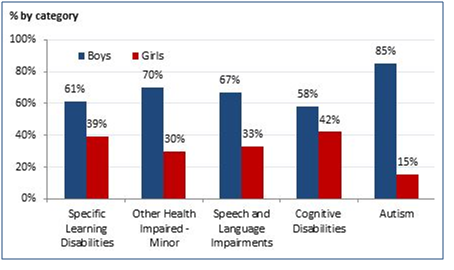Jimmy drives me nuts. He drives all his teachers nuts. Jimmy is what we call a frequent flier. Referral in hand, he visits the Dean regularly, takes his detentions on the chin and keeps on committing the same infractions that lead to his next trip down the hall.
This boy makes odd noises or whistles at random times. He distracts his group from doing group activities. He often refuses to work. Jimmy hardly ever gets with the program and he tries to keep others from joining in the program as well.
He breaks pencils. He angers easily, tossing fragments of pencils under nearby desks. He often thinks punishments are unjust. “I wasn’t doin’ nothin’,” he will say, if I stop him from whistling and wandering around the room when he is supposed to be taking notes.
For any aspiring teachers out there, Jimmies are a fact of teaching life. Teachers write referrals to the Dean. They call home. They take these students into the hall to encourage them to improve their behavior. They talk to social workers, counselors and deans. They may ask advice from special education teachers. In worst-case scenarios, one Jimmy can derail a class regularly, eating teacher and student minutes like the Flamin Hot Cheetohs that fall in crumbles under his desk. (Yes, there’s a rule against eating in class. No, Jimmy doesn’t care.)
That said, I’m sad for my Jimmy. I know something. I know that when I give this boy something he can actually do, he does his best. He tries hard. He’s so proud of his successes.
We are drowning Jimmy.* He can’t do any of the math I’m presenting. I’m pretty sure this is true, although since he has done almost none of this math, I might be wrong. If he can do any of the math, though, I can’t present a single piece of evidence to that effect and it’s March today.
Jimmy needs to be in special education. Today I will call his parents to ask them to demand that the district test him for special education. Special ed teachers have told me that parental pushing is Jimmy’s only chance, and I know from experience that they are likely to be right. My district has “too many” students in special education, too many African-American and Hispanic boys in particular, and the state has commented unfavorably on our numbers. Given that the district is almost all African-American or Hispanic, and that boys are always more heavily represented in special education, I almost want to laugh at this “appearance of discrimination” argument. Given our demographic, who else are we going to put in special education?
The following chart helps document the larger problem:

SOURCE: Ohio Department of Education, Data Warehouse Reports
Eduhonesty: The number of hurdles a teacher has to jump over to get a child placed in special education seems absurd. I am sure placement mistakes have been made. But we are moving into the last quarter, this boy gets in trouble constantly, and I have zero evidence that he can do his work. If he never did any work, that might be some form of oppositional-defiance, but even then special education would seem to be the appropriate choice for this fundamentally nice kid who, in my opinion, simply can’t handle being embarrassed by his lack of knowledge.
Let’s hope mom or dad will carry my torch for me.
* Readers, please understand that I was never allowed to pick my own material or deviate from the common 7th-grade lesson plan. I would not have drowned Jimmy, except I had zero say in what the administration demanded that I be teaching.
